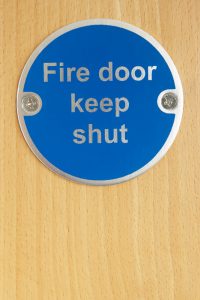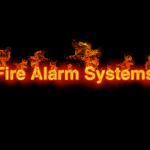Fire safety is critical to building management, and fire doors are pivotal. These specially designed doors help to prevent the spread of fire and smoke, providing a safe evacuation route for occupants. This guide aims to shed light on the Fire Doors (Regulation 10) of the Fire Safety (England) Regulations 2022. Whether you’re a building owner, a managing agent, or a resident, this guide will provide valuable insights into the importance of fire doors, the legal requirements surrounding them, and the best practices for their maintenance and inspection.
Contents
Understanding Fire Safety (England) Regulations 2022
The Implementation and Importance of the Regulations
The Fire Safety (England) Regulations 2022 were enacted on 18 May 2022 and came into force on 23 January 2023. These regulations were established in response to the recommendations made in the Grenfell Tower Inquiry Phase 1 report, which called for changes in the law to enhance fire safety. The regulations are paramount to prevent fire incidents and protect lives.
Responsibilities and Consequences of Non-compliance
The regulations place responsibilities on building owners and persons having control of the premises. These individuals, known as Responsible Persons, must comply with the regulations from 23 January 2023. Non-compliance with these regulations is a criminal offence if it places one or more relevant persons at risk of death or serious injury in the event of a fire.
About This Guide
Purpose and Target Audience
This guide is designed to assist those with duties under the Fire Safety (England) Regulations to comply with Regulation 10. It is particularly useful for building owners, managing agents, and residents of buildings that contain two or more domestic premises and common parts.
Scope of Regulation 10
Regulation 10 applies to all blocks of flats that incorporate common parts, regardless of whether the block is purpose-built or is a conversion. It makes requirements about fire doors, including information that the Responsible Person must give to all residents and routine checks of fire doors that the Responsible Person must ensure are carried out.
 Understanding the Law
Understanding the Law
The Regulatory Reform (Fire Safety) Order 2005
The Regulatory Reform (Fire Safety) Order 2005 requires suitable fire precautions in a block of flats to ensure that the common parts are safe to use to escape in the event of a fire. These precautions are determined by carrying out a fire risk assessment.
Importance of Fire Risk Assessment
A fire risk assessment is a legal requirement under Article 9 of the FSO. Identifying the doors in question and determining whether they can resist spreading fire and smoke into or within the common parts is crucial.
Role and Maintenance of Fire Doors
Fire doors are one of the most important measures to safeguard the means of escape from fire. They need to be kept in good working order and good repair. Any defects or wear and tear that could undermine the ability of the doors to prevent fire and smoke spread must be addressed promptly.
The Role of Fire Doors
Categories of Fire Doors in a Block of Flats
Fire doors within a block of flats fall into four categories: flat entrance doors, doors to stairways and lobbies, doors that sub-divide corridors and doors to plant rooms and cupboards. Each type of door serves a specific purpose in preventing the spread of fire and smoke, thereby ensuring the safety of residents.
Information for Residents: Responsibilities and Actions
Importance of Fire Doors in Fire Safety
Residents play an important role in ensuring fire safety. If there is a fire in their flat, the flat entrance door is an effective barrier to spreading fire and smoke into common areas.
Responsibilities of Residents
Regulation 10 requires that residents are given information about the importance of keeping fire doors shut when not in use, not tampering with self-closing devices, and reporting any fault or damage immediately to the Responsible Person. This information must be provided to any new resident as soon as reasonably practicable after they move into their flat, and all residents must be reminded about this information at periods not exceeding 12 months.
Guidelines for Altering or Changing Front Doors
If a resident wants to alter or change their front door, it should be done with the knowledge and agreement of the Responsible Person. This is to ensure that any changes do not negatively impact the overarching fire risk assessment for the premises.
Routine Checking of Fire Doors: Responsibilities and Actions
 Requirements for Routine Checking of Fire Doors
Requirements for Routine Checking of Fire Doors
Regulation 10 requires that, if the top storey of the building is above 11m in height, the Responsible Person must use best endeavours to check all flat entrance fire doors at least every 12 months and check any fire doors in communal areas at least every 3 months.
Guidelines for Checking Fire Doors
The checks under Regulation 10 should be simple and basic. They are only visual and do not involve the use of tools. With appropriate instruction, caretakers, managing agents, housing officers, and maintenance personnel should be able to carry out these checks.
Checking Flat Entrance Doors
To check flat entrance doors, access to each flat is needed so that the door can be checked on both sides. Arrangements should be made with residents in advance to carry out these checks. Each time you carry out fire door checks, you should check for any replacements, damage or defects, condition of the fire-resisting glass and glazing system, defects in the hinges or other elements of the ironmongery, condition of intumescent strips and smoke seals, gap size, and the effectiveness of the self-closing device.
Checking Doors to Stairways, Lobbies, and within Corridors
These doors are subject to greater wear and tear and greater potential for damage than flat entrance doors, so they must be examined more regularly. The checks are similar to those described for flat entrance doors.
Checking Doors to Plant Rooms, Service Cupboards, and Risers
These doors should also be checked at least every three months. Again, the checks are similar to those described for other doors. In the case of these doors, they may be either self-closing or kept locked shut.
Conclusion
Fire doors are crucial to fire safety in buildings, particularly in blocks of flats. Understanding and complying with Regulation 10 of the Fire Safety (England) Regulations 2022 is essential for maintaining the safety of residents. This guide provides an understanding of the regulation, the role of fire doors, the responsibilities of residents, and the guidelines for routine checking of fire doors. By adhering to these guidelines, we can ensure that our buildings are safer and better prepared in a fire.
FAQ
What is Regulation 10 of the Fire Safety (England) Regulations 2022?
Regulation 10 pertains to fire doors in buildings that contain two or more domestic premises and common parts. It outlines the requirements for information that the Responsible Person must give to all residents and the routine checks of fire doors that the Responsible Person must ensure are carried out.
Who is the Responsible Person?
The Responsible Person is typically the building owner or the person having control of the premises, such as a managing agent. They are responsible for complying with the Fire Safety (England) Regulations 2022 and ensuring the safety of the residents in the event of a fire.
How often should fire doors be checked?
According to Regulation 10, if the top storey of the building is above 11m in height, the Responsible Person must check all flat entrance fire doors at least every 12 months and carry out checks of any fire doors in communal areas at least every 3 months.
What should I do if I notice a fault or damage to a fire door?
If you notice any fault or damage to a fire door, such as a broken self-closing device, damage to the door or frame, or a missing intumescent strip or smoke seal, you should report it immediately to the Responsible Person.
Can I alter or change my front door?
If you wish to alter or change your front door, you must do so with the knowledge and agreement of the Responsible Person. Any new door must be fire-resisting and installed by a competent person to ensure it does not negatively impact the overarching fire risk assessment for the premises.


 Understanding the Law
Understanding the Law Requirements for Routine Checking of Fire Doors
Requirements for Routine Checking of Fire Doors

